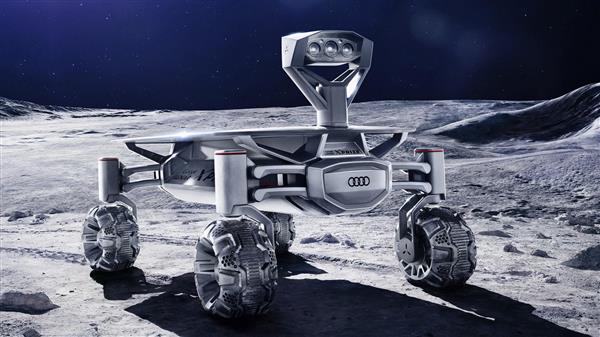German auto manufacturer Audi has partnered with Berlin-based engineering group Part-Time Scientists to launch a 3D printed moon rover into space. The rover, a squat WALL-E-esque machine, is called the Lunar Quattro and was developed as part of the Google Lunar XPRIZE competition.
First launched in 2007, the Google Lunar XPRIZE competition invited engineers and scientists from around the world to develop and land rovers on the moon. As part of the competition, the participants would have to not only land their rover on the moon’s surface, but have it drive 500 meters and send high-res photos of the moon back to earth.
Today, Audi and the team from Part-Time Scientists are closer than ever to realizing that goal, and expect to have their Lunar Quattro rover on the moon in 2017. As a pretty nice bonus, the winner of the Google Lunar XPRIZE is entitled to win a whopping $30 million.
According to Audi, the Lunar Quattro, which was first unveiled earlier this year, is almost ready to go after having undergone some extreme testing and many tweaks and adjustments. The moon rover was developed with the help of 3D printing technologies, and is actually made of a 3D printed titanium and high-strength aluminum structure. The vehicle is powered by a tilting solar panel and a lithium-ion battery, which powers its four wheel-mounted motors.
As Top Gear reports, the new and improved 3D printed Lunar Quattro also features larger wheels than before, which allow the vehicle to move more steadily over the moon’s rough surface, and integrates Audi’s Quattro all-wheel-drive system as well as 360 degree wheel rotation. According to Audi, 3D printing was a crucial part of the development process, as it allowed the team of engineers to reduce the vehicle’s weight from 38kg to 30kg, making it easier and cheaper to ship into space.
While the rover only boasts a speed of up to 2.2 miles per hour (slower than the average human’s walking pace), it is designed primarily to move over the moon’s surface and capture images of its surroundings, so racing around is hardly a priority. Equipped with a total of three cameras, the moon rover is capable of capturing 3D images of the moon’s surface environment as well as high-res panorama images that can be transmitted back down to earth.
The Lunar Quattro is expected to deploy in 2017 as part of the Google Lunar XPRIZE competition. If all goes well with the prototype rover’s final tests (which will be completed in the UAE), two Lunar Quattro vehicles are scheduled to be shipped up to the moon on the ALINA (or Autonomous Landing and Navigation Module), a private lunar lander equipped to transport two rovers. The plan is reportedly to land the rovers very near to where the Apollo 17 landed on the moon in 1972.
In addition to helping develop the 3D printed Lunar Quattro moon rover, Audi has taken on the role of sponsoring Part-Time Scientists in the hope that together they will bring home the $30 million prize.




